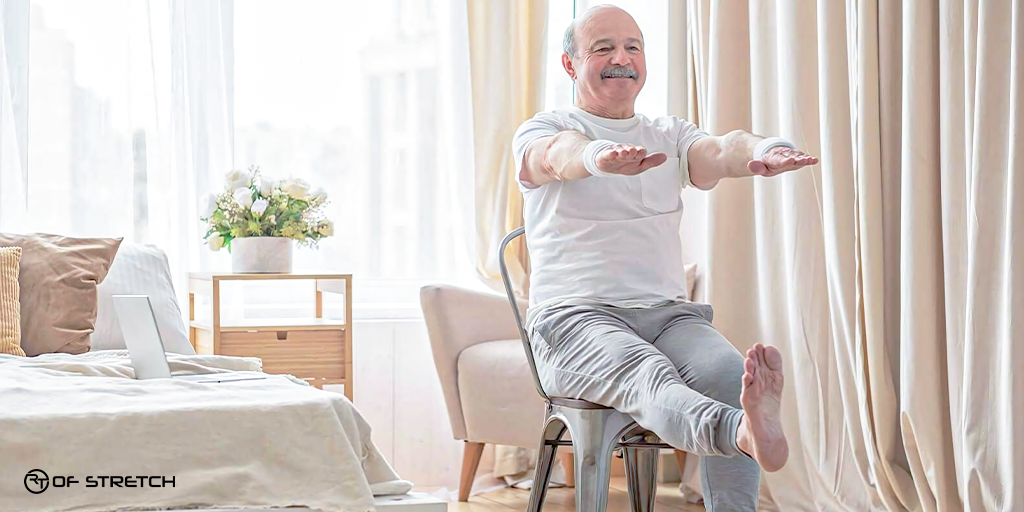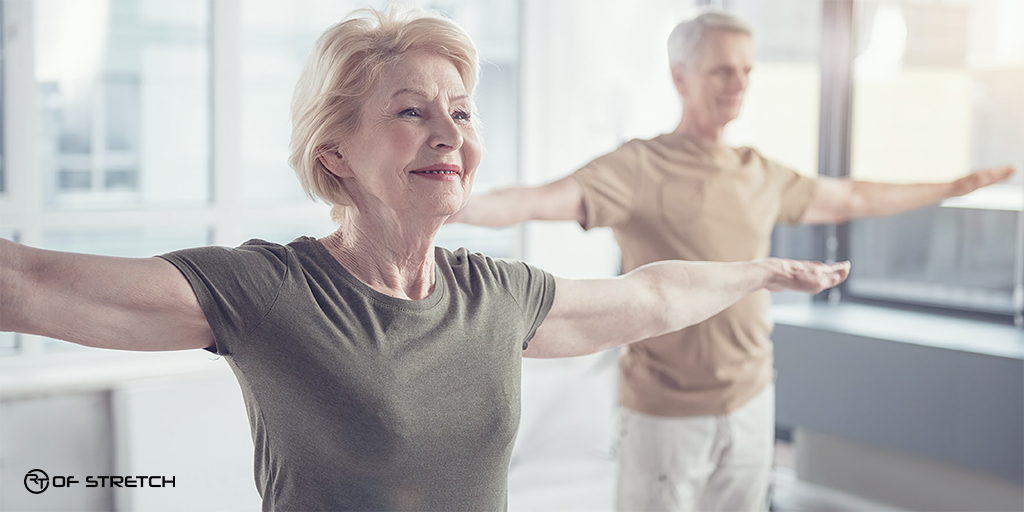The Impact of Stretching To Seniors
As we get older, life tends to slow down. The energy we once had seems to fade, and simple tasks start to feel like challenges. It might be the struggle of standing up after sitting for a while or the effort it takes to reach something on a high shelf. But what if I told you there’s an easy way to tackle these everyday hurdles? It’s not about pushing yourself too hard—it’s about stretching. That’s right—just a few minutes each day can help you feel more flexible, balanced, and ready to take on the world. So, let’s talk about why stretching should be an essential part of your routine as you age. Trust me, the benefits are worth the stretch!
Benefits of Stretching for Seniors
Let’s see how stretching can benefit seniors in more detail:
1. Improved Flexibility and Range of Motion
Stretching lengthens your muscles and loosens your joints, making it easier to do everyday tasks. Stretching for seniors makes it easier to reach or bend down for everyday tasks. Better movement can really improve your daily tasks and overall quality of life.
2. Reduced Stiffness and Pain
Many seniors experience age-related stiffness, making simple tasks like sitting, standing, or walking uncomfortable. Regular stretching helps relieve this tension and reduces stiffness in the body. It can also alleviate discomfort caused by conditions like arthritis, making it easier to stay active and pain-free.
3. Enhanced Balance and Stability

Improved flexibility and muscle strength from stretching can lead to better balance and stability. Stretching helps seniors strengthen key muscle groups, like those in the lower body, which are vital for maintaining balance. Improving movement and strengthening muscles helps you feel stable and lowers the risk of falls.
4. Improved Posture
Tight chest and shoulder muscles can cause poor posture, leading to neck and back pain. The benefits of daily stretching include helping to loosen muscles, improving posture, and reducing spine strain. It is vital for seniors who may spend a lot of time sitting or bending forward.
5. Increased Muscle Function
Stretching for seniors helps muscles work more effectively by improving their ability to contract and extend. It’s important for daily tasks like standing up, carrying groceries, or climbing stairs. When your muscles function properly, you reduce your risk of injury and make daily movements feel easier.
6. Reduced Stress and Improved Mental Health

Stretching isn’t just good for the body—it’s also great for the mind. Stretching reduces muscle tension, which often causes stress and anxiety. Plus, stretching releases endorphins, which can improve mood and reduce feelings of stress. Regular stretching can contribute to better mental health by helping seniors feel more relaxed and less tense.
7. Improved Circulation
Stretching boosts blood flow to muscles, improving circulation. Better circulation helps bring oxygen and nutrients to the muscles, promoting faster healing and improved muscle function. For seniors, this can lead to improved overall health, increased energy, and a faster recovery from physical activities.
8. Prevention of Injuries

Maintaining flexibility is crucial for preventing injuries. By stretching regularly, seniors can reduce their risk of strains, sprains, and other injuries. Stretching helps keep muscles flexible and joints mobile, which is crucial for staying safe while moving. For seniors, this can mean fewer trips to the doctor for injuries and a greater ability to stay active.
9. Increased Independence
Improved flexibility, balance, and reduced pain allow seniors to stay independent and continue doing the things they love. When you can move with ease, it’s easier to take care of yourself and stay engaged in activities like cooking, gardening, or socializing. Stretching can help you maintain your independence and stay active in your daily life.
Importance of Stretching for People Over 60
As we age, the importance of stretching for people over 60 becomes even more significant. Muscles naturally lose flexibility with age, and joints can become stiff. Stretching for seniors plays a vital role in maintaining mobility and independence. Regular stretching helps keep the body agile, reducing the effects of aging on movement and making it easier to stay active and enjoy life.
Stretching Tips for Seniors
As you begin your stretching routine, keep a few essential tips in mind:
- Always breathe naturally while stretching. Don’t hold your breath.
- Move into each stretch slowly and smoothly. Don’t bounce while stretching, as it can strain your muscles.
- Focus on gentle, controlled movements. Stretching should feel good, but you shouldn’t feel pain.
- Keep joints slightly bent to avoid unnecessary strain or injury.
Final Thoughts
Stretching helps seniors stay independent, reduce pain, and feel better every day. By adding daily stretches for seniors into their routines, older adults can enjoy greater flexibility, improved posture, better balance, and an overall higher quality of life. If you’re looking to make stretching a regular part of your life, remember to start slow, listen to your body, and stay consistent.
Ready to Improve Your Flexibility and Stay Active?
Take the first step to improve flexibility and balance! Visit RT of STRETCH for personalized stretching plans and expert guidance designed for seniors. Start stretching today!
FAQs
What are the best stretches for seniors?
The best stretches for seniors include hamstring stretches, neck stretches, quadriceps stretches, and chest stretches. These exercises help improve flexibility, posture, and balance.
How often should seniors stretch?
Seniors should stretch for at least 30 minutes three times a week. However, stretching daily can provide even greater benefits.
Are there any precautions seniors should take while stretching?
Yes, seniors should avoid overstretching and focus on gentle, slow movements. Always breathe naturally and never push into pain. Before starting a new stretching routine, it’s helpful to check with a healthcare provider.
Can stretching reduce muscle stiffness in seniors?
Absolutely! Stretching eases muscle tension, making it easier for seniors to move and do daily tasks.
How does stretching improve balance in seniors?
Stretching helps maintain the flexibility and mobility needed for proper balance. It targets muscles in the lower body, like the hamstrings and calves, which are crucial for preventing falls.